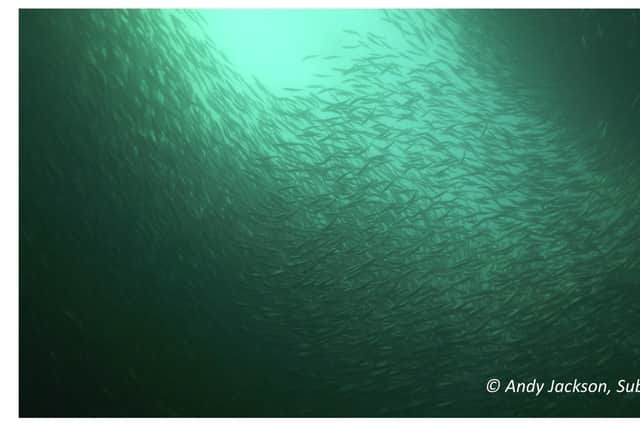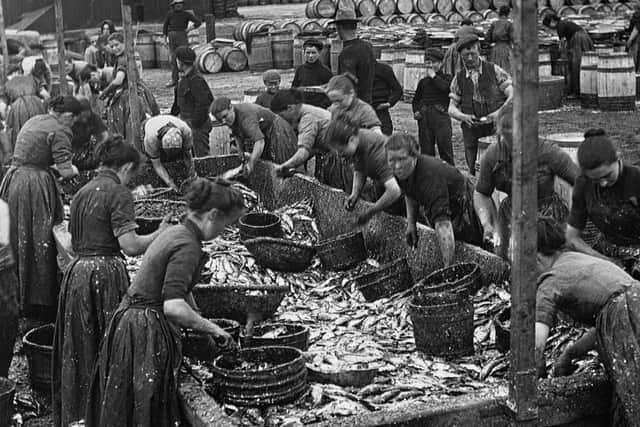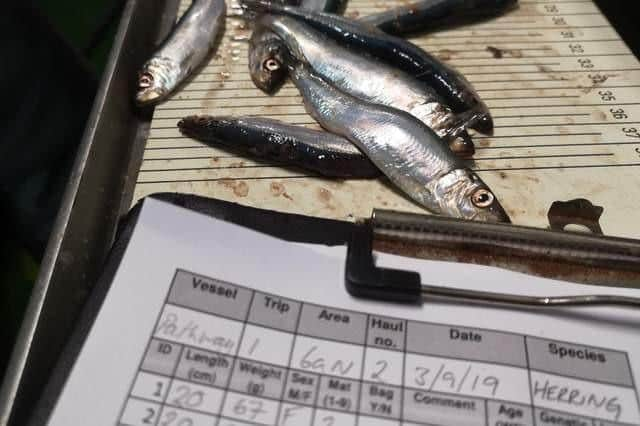Silver Darlings: Joint project to identify Scotland's west coast herring spawning grounds
Historically, Atlantic herring were a vitally important fish to the people of Scotland.
Once the largest fishery globally, stocks dramatically collapsed in the 1970s after more than 150 years of shoals – particularly on Scotland’s east coast – being plundered, gutted and boxed on quaysides and foreshores.
Advertisement
Hide AdAdvertisement
Hide AdOn the west coast of Scotland, herring never fully recovered, but since 2018 large shoals have been observed spawning off Wester Ross.
Edinburgh Napier University is now leading a project working with Scottish west coast communities and organizations between the Clyde and Cape Wrath, including the Hebrides, to identify herring spawning habitat and help conserve it. This will give the Silver Darlings’ populations on the west coast a chance to reproduce and grow again. The project is called the West of Scotland Herring Hunt (WOSHH) and funded by the William Grant Foundation.
WOSHH launches a new website scottishherring.org today at the Gairloch Museum. The website is the first dedicated to Scottish herring. It is a place to share knowledge on Atlantic herring in Scottish seas and find out more about their ecological, economic and cultural importance. The public will also see a demonstration of a forthcoming new citizen-science tool, a web app, inviting everyone to join in on ‘herring hunts’ to report signs of spawning.
Both website and the hunting tool have been co-developed by staff and students from Edinburgh Napier’s School of Applied Sciences and the School of Computing, under the guidance of Karen Diele, Professor of Marine Ecology, the lead of WOSHH, and co-investigator Dr Simon Wells.
Unlike most other marine fish, reproducing herring relies on specific benthic (on the seabed) spawning habitat. But knowledge of location and status of such essential habitat is scarce on the west coast of Scotland.


“Healthy spawning habitat could help rebuild inshore herring populations, with potentially positive social and economic impacts, as well as improving biodiversity and ecosystem functioning,” explains Professor Diele. “WOSHH will establish connections and dialogue between key stakeholders, promote co-management strategies of inshore waters, and champion the integration of essential spawning grounds into herring management.”
Dr Michelle Frost, WOSHH’s project coordinator continues: “Herring are important to a wide range of species that feed upon them, including not only humans but also sand eels, haddock, cod, many seabirds, porpoise and minke whales.
"By attracting these charismatic species, herring can benefit local communities, increasing income from wildlife tourism”.


Advertisement
Hide AdAdvertisement
Hide AdHerring themselves feed mostly on plankton and help move energy from the bottom of marine food webs to top predators, functioning as a keystone species.”
Peter Cunningham, biologist from the Wester Ross Fisheries Trust says: “Herring have been so important locally, and our community has a renewed interest in west coast herring now, since we observed large shoals recently near Gairloch for the first time in almost 50 years”.
Dr Karen Buchanan, curator of the Gairloch Museum explains: “We are delighted to add our support to the WOSHH project, which is helping to address urgent research needs in our area, and to host the outreach event today”.
The WOSHH project will help determine the location and status of essential herring spawning grounds in inshore waters on the Scottish west coast. “The new herring hunting web-app will increase this project’s inclusivity, since it will allow everyone to contribute as citizen scientists”, says Dr Wells.


“Herring is important for healthy functional Scottish seas that provide humans and other species with so many benefits,” concludes Professor Diele. “They deserve our support, so that populations can re-establish where possible.”
Comments
Want to join the conversation? Please or to comment on this article.
